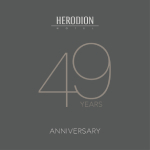Our Blog
The archaeological excavation beneath the Acropolis Museum

An ancient Athenian neighbourhood is incorporated in a unique way in the Acropolis Museum architecture as yet another exhibit which converses with the masterpieces of the ancient Greek civilization presented in its galleries. Nesting on the gentle south slope of the rock, it houses life and human activities from the 4th millennium BC until the 12th cent. AD. Streets, residences, baths, workshops and tombs compose the complex image of archaeological remains. Amongst them those of late antiquity are the best preserved.
Today the visitor can only see part of what was brought to light by the excavations in the "Makrygianni plot", as the area surrounding the Museum is named. Part of this excavation has been covered with a contemporary layer of earth to preserve it, while another was removed to make way for the underground levels of the Museum and the Metro Station "Acropoli".
Life here begins sometime between 3500 and 3000 BC. Until the 9th cent. BC houses, workshops and cemeteries coexist or succeed each other. Though sparse, the residential use of the site shapes from the middle of the 8th c. BC. Until the beginning of 5th cent. BC this area is located at the outskirts of the city, outside the fortification walls.
A major change takes place in the end of the 5th cent. BC when the area undergoes street planning acquires its urban character and is incorporated within the city walls. Until the beginning of the 1st cent. BC a dense street network develops, and houses with small interior courts, shops and workshops occupy the area. In 86 BC it is devastated by the troops of the Roman General Sulla and is abandoned for many years. A little later, industrial units are established on top of the ruins.
However, from the middle of the 2nd cent. AD the neighbourhood flourishes anew. The houses are now larger. Most of them acquire colonnaded courtyards, rooms with multicolor wall-paintings, and in some instances mosaic floors and private latrines. The most luxurious houses even feature private baths. This prosperity comes to a halt in AD 267 when the Herulians, a germanic tribe of the North, ravage the city of Athens and destroy the site.
The area is reorganized anew in the end of the 4th - beginning of the 5th cent. AD. All houses have colonnade courtyards but their character and dimensions differ. Next to smaller houses, probably belonging to middle-class citizens, stand larger and more luxurious residences, urban mansions of wealthy citizens.
Round the middle of the 5th cent. AD most residencies are repaired and continue to be used. At the same time a luxurious building with mosaic floors and a private bath (Building Z) is established at the place of two older mansions. It is the headquarters of a high ranking official or a local patron with ties to the Imperial court.
In the beginning of the next century, Building Z acquires a new wing (Building E) with innovative architectural features for the city of Athens. This building along others restored or newly erected, indicates the continuity of urban life in a period when Athens is considered to suffer decline and urban shrinkage.
In the end of the 6th c. AD some buildings are destroyed and others badly damaged. The lower level of building E is converted to workshops that function, at least, until the beginning of the 8th cent. AD. They are later abandoned and for several years the area is abandoned. New houses and workshops appear in the 10th-12th cent. AD, which stay in use until the final abandonment of the site at the beginning of the 13th cent. AD
In the beginning of the 19th cent. on top of the ruins of building Z, the first military hospital of the city of Athens, known as "Weiler Building" is erected. Today this building houses the Acropolis Museum’s administrative offices.
For tickets and more information click here: https://www.theacropolismuseum.gr/en/content/archaeological-excavation-beneath-acropolis-museum
Source: Acropolis Museum website





